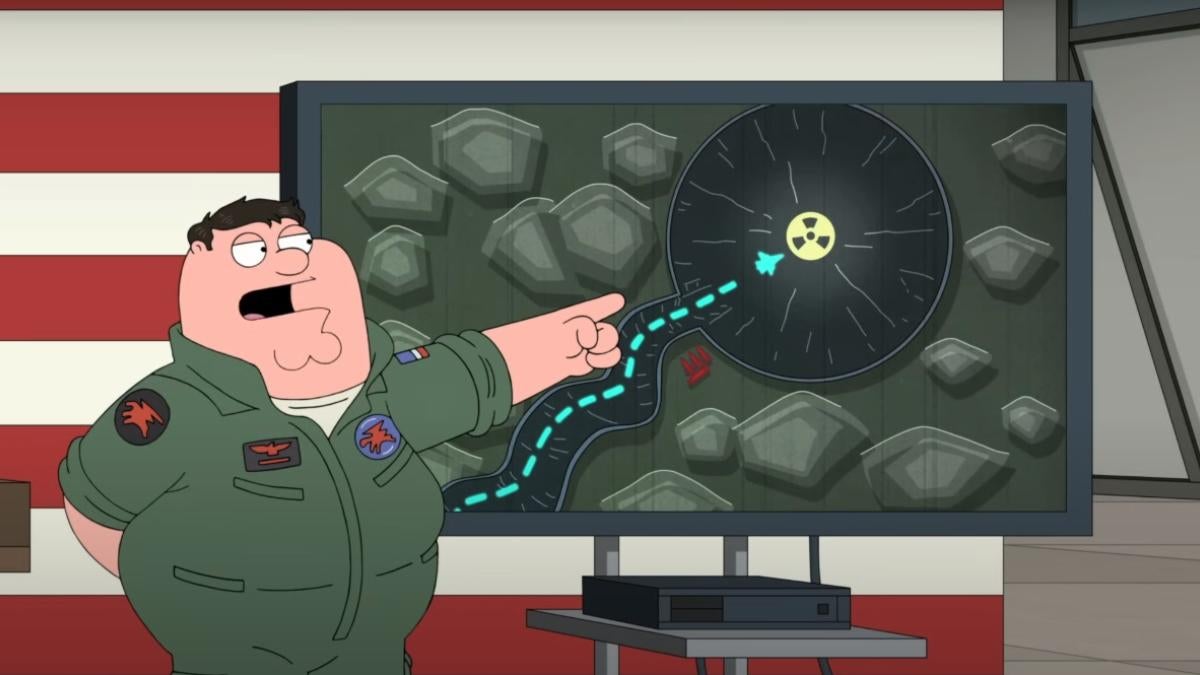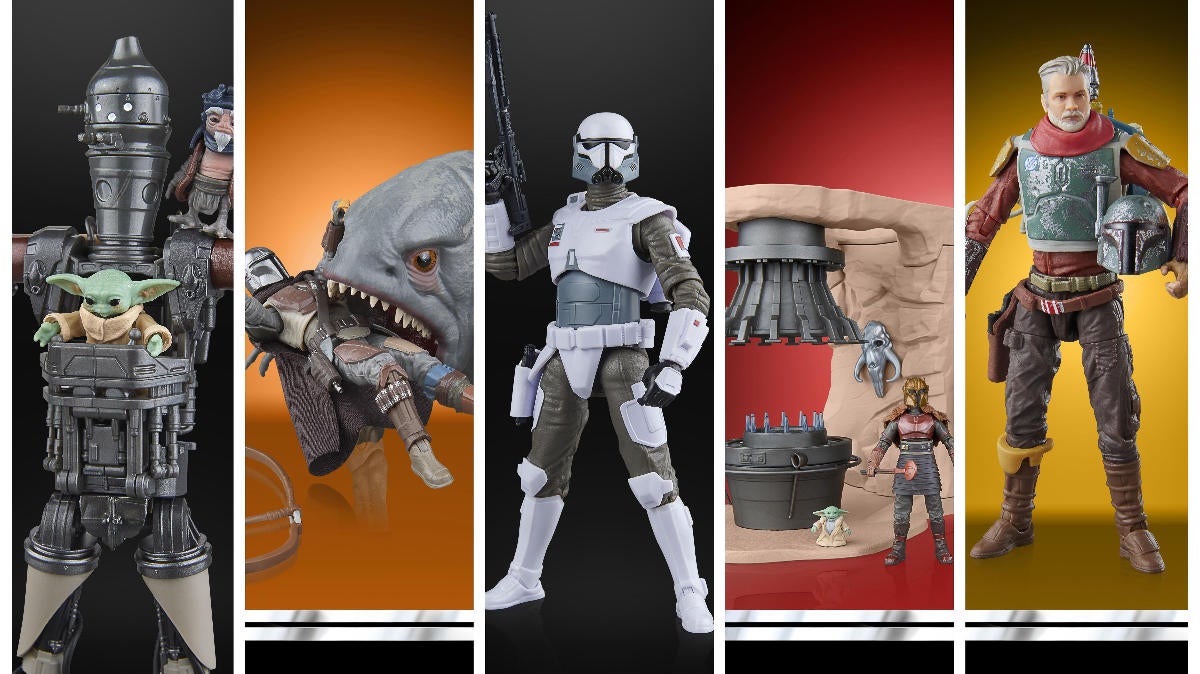Star Wars: The Deckbuilding Game Review - Addictive Yet Approachable Experience For All Fans
There's no shortage of Star Wars in the world of tabletop, but Fantasy Flight Games' newest game might be one of the franchise's most approachable in the hobby. Star Wars: The Deckbuilding Game is a self-contained game for 2 players that pits the Rebellion against the Empire, and you will look to add to your forces and overwhelm the enemy's Capital Ships and Base Planets to win the game. It's a straightforward premise and the gameplay echoes that clarity, delivering quick turns that require you to look ahead without overwhelming the player. As your forces grow, so do your options, and The Force plays a small but still impactful role. Star Wars: The Deckbuilding Game's core strength is how approachable and easily teachable it is, especially for Star Wars fans who are newer to the hobby, though more experienced players will still discover a fast-paced and rewarding experience more than worth their time.
Throughout the Star Wars: The Deckbuilding Game, you will buy new cards from the Galaxy Row to add to your deck while playing as your respective faction. Those will consist of all sorts of vehicles, Capital Ships, and characters from the franchise, and each of these cards will come with a variety of values for Attack, Resources, Force, and Cost. They also might come with a special ability that you can use once per turn, and Capital Ships have the added effect of remaining on the field after being drawn so they can defend your Base.
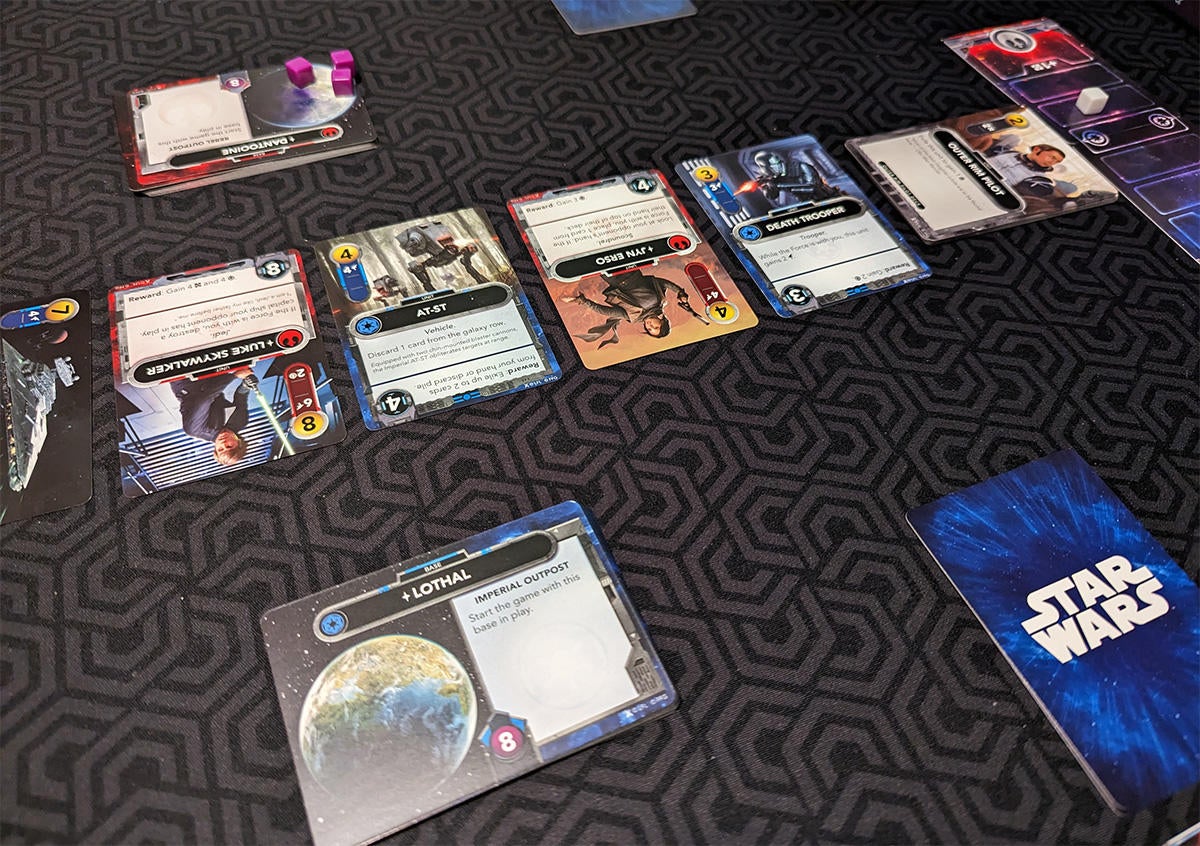
Living up to the Deckbuilding in its title, building your forces by purchasing cards from the Galaxy Row, and choosing the right card to buy is paramount throughout the first 60% of the game. You'll want to choose cards that suit your particular approach, whether that be loading up on Capital Ships to defend your base, going all in on cards that offer Resources to help gain more powerful cards, or going aggressive and picking up more Attack cards to start wearing down your opponent. You'll have options regardless of which style you prefer, though the game shines in the other methods available to mess with your opponent.
You can pick up cards that will make your opponent discard a card from their hand, while other cards can manipulate the Galaxy Row and discard cards from it, making them unavailable to your opponent. You can also delay cards from being added to your opponent's deck more directly. You can only purchase your faction's cards from the Galaxy Row, with the only cards purchasable by both sides being Neutral or Outer Rim forces. There's flexibility in this system though, as there are ways to affect everything if you can get ahold of the right cards.
For instance, there are Capital Ships that will allow you to sacrifice them to hit your opponent's Ships or Base for damage, and there are other cards that can be utilized to repair your other ships and even your Base. Some units will also have the ability to put newly purchased cards on the top of your deck, which gets them in play sooner, while others will allow you to draw more cards on your turn if certain conditions are met.
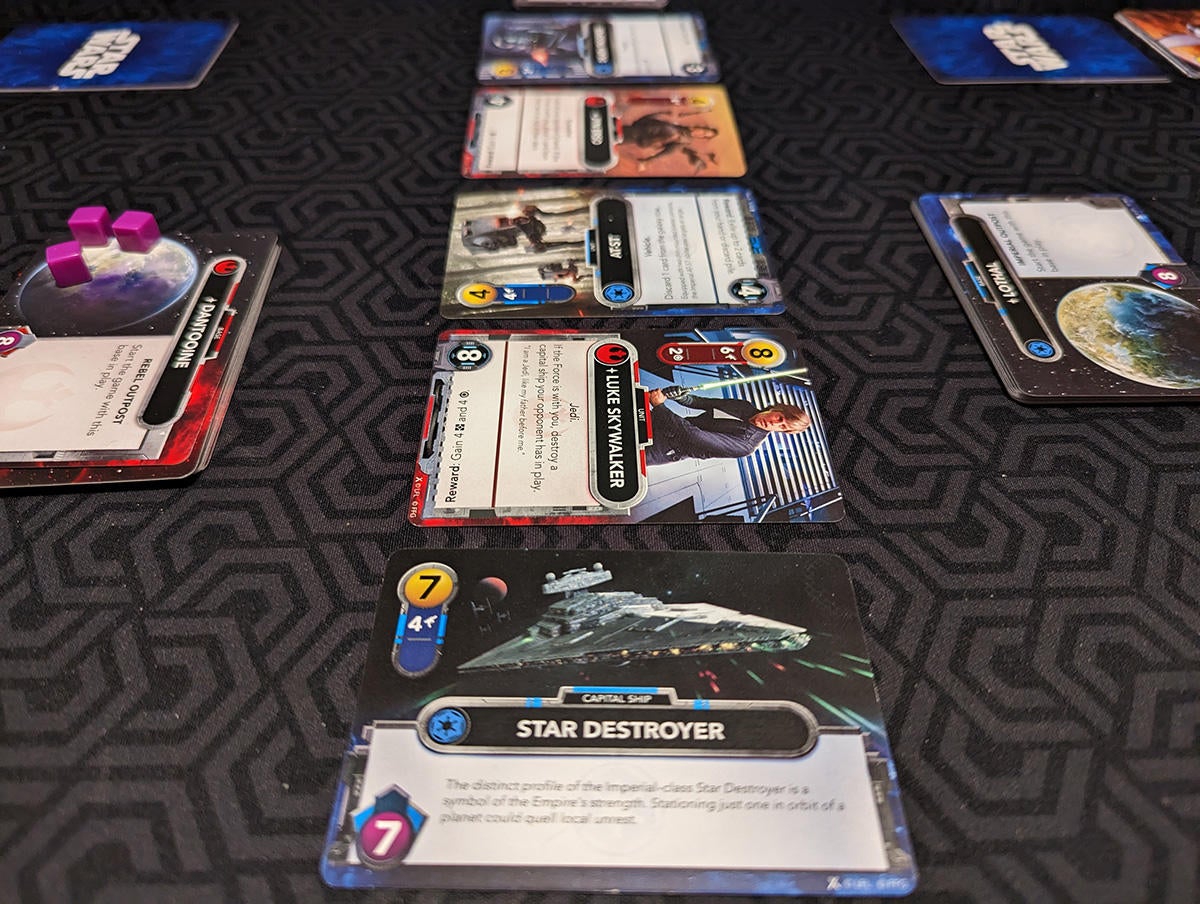
Then there's Bounty Hunting (Empire) and Sabotage (Rebellion), which allows you to attack your opponent's cards on the Galaxy Row. This will net you a reward in resources, force, or another special ability, but it also removes that card from play until the Main Deck needs to be shuffled again. Not only will can you gain some much-needed resources, but you can also take a powerful factor away from your opponent before they can even attain them, and salt on the wound is if you manage to do it multiple times. I'm not going to say that Cassian Andor was stolen from me a few times in a row, but yeah, that happened, and by the time I got him he wasn't nearly the factor the could have been throughout the game. The same happened with Darth Vader at one point, and taking out a key ally can be crucial to gaining the upper hand early.
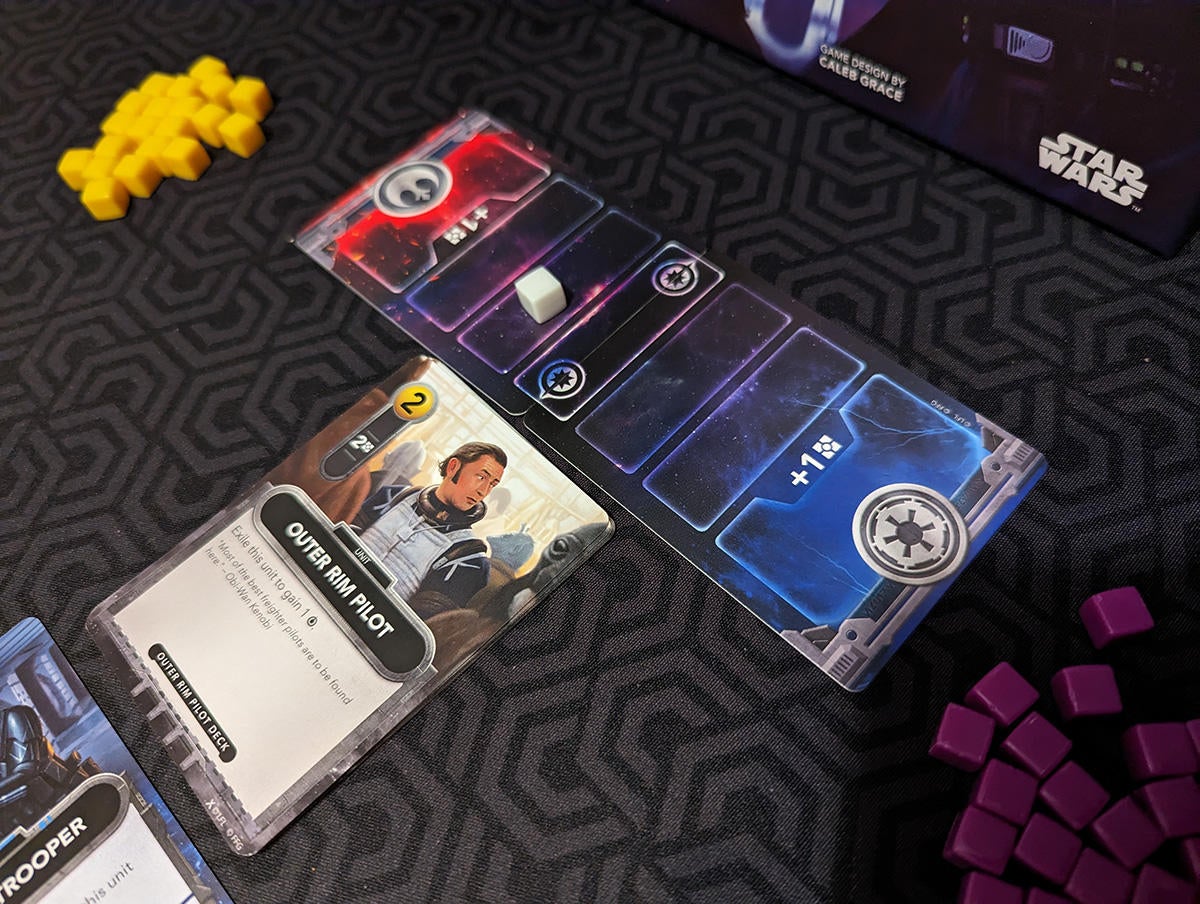
Thankfully there's a way to counter this with key cards like Jawas, which allow you to purchase cards from the Discard pile, and the same goes for manipulating the Force. The Force is represented by a Track with Light and Dark sides on either side of it. Throughout the game, some cards will have a Force symbol on them with a number, and you will move the tracker that many spaces towards your side on your turn. Some characters will unlock bonuses that can really tilt the scales of a particular confrontation if the Force is on your side, and an added perk is that you will gain one additional resource if it is all the way on either side.
If that sounds like a lot of options, you're right, and yet it's all presented in an easy-to-learn package that gets you buying cards and manipulating the Galaxy Row and your opponent's cards in a matter of several turns. The ultimate goal of the game is to take down your opponent's Bases, and as you accomplish that goal more options are then presented to you, as you can choose which bases you place out next, and they each have a special ability that may suit your current predicament better.
Eventually, you will have most of the cards you want in your deck, and at that point, things switch. Instead of balancing acquiring cards and attacking or defending, you are now more focused on utilizing your various characters and skills in head-on confrontations with your opponent. A horde of Capital Ships can be in play and it really starts to feel like a classic dogfight as you pull off satisfying ability combos to take out several in a large swath. Base choice becomes increasingly important, and can help swing momentum in a big way. Full Galaxy mode, which allows you to have all 10 bases to choose from, is the richest way to play and is my preferred way. It's recommended to go to 4 or 5 bases destroyed as a win condition, though I actually went further and still had a great time. At that point though resources start to become meaningless since there's nothing left to buy.
For new players, there's a perfect beginner game layout that will get you up to speed on how it plays. The only problem is that it's perhaps a bit too fast, and not having all of the bases really reduces your options as things move forward. Moving forward, I would just play the Full Galaxy mode, even with new players, as I think it still retains its approachable style but with all of its tactical options present.
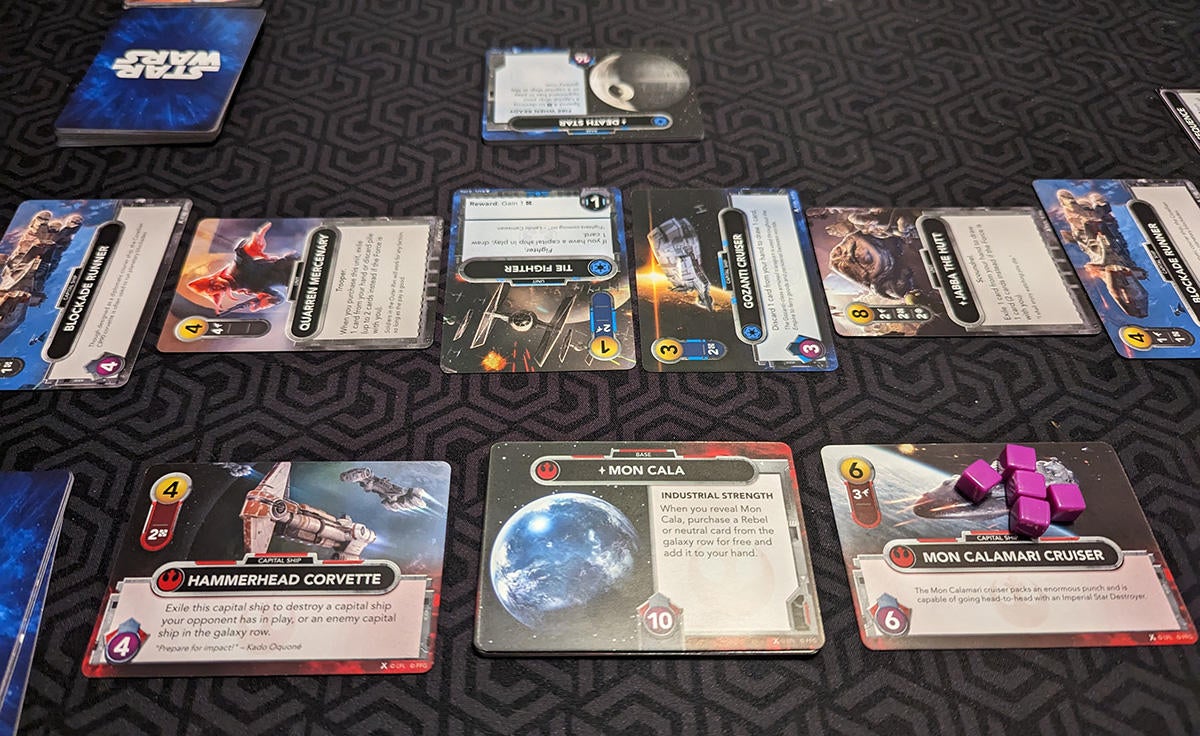
There's not much to complain about, as I think the game accomplishes what it set out to do. That said, the Advanced Game Mode of Full Galaxy isn't really advanced, but described as the way it was intended to be played. A true advanced Game Mode would give experienced players more to sink their teeth into. Perhaps another way to utilize resources later in games would put it over the top, or perhaps a set of cards that increases the role of Neutral forces, allowing them to adversely affect either side. If the game does well expansions will likely accomplish this, but that extra layer would really go a long way to making the game even more well-rounded.
Star Wars: The Deckbuilding Game is really the best of both worlds. It embraces the Star Wars theme in its core conflict and visual style while offering a rich and rewarding gameplay experience that Star Wars fans of all experience levels should have a delightful time with.
Rating: 4 out of 5
Star Wars: The Deckbuilding Game is available in stores now.
Designed By: Caleb Grace
Artwork By Christopher Hosch and Laurence Smith
Published By Fantasy Flight Games, Asmodee, and Rebel Sp. z o.o.
Review copy provided by the publisher.

